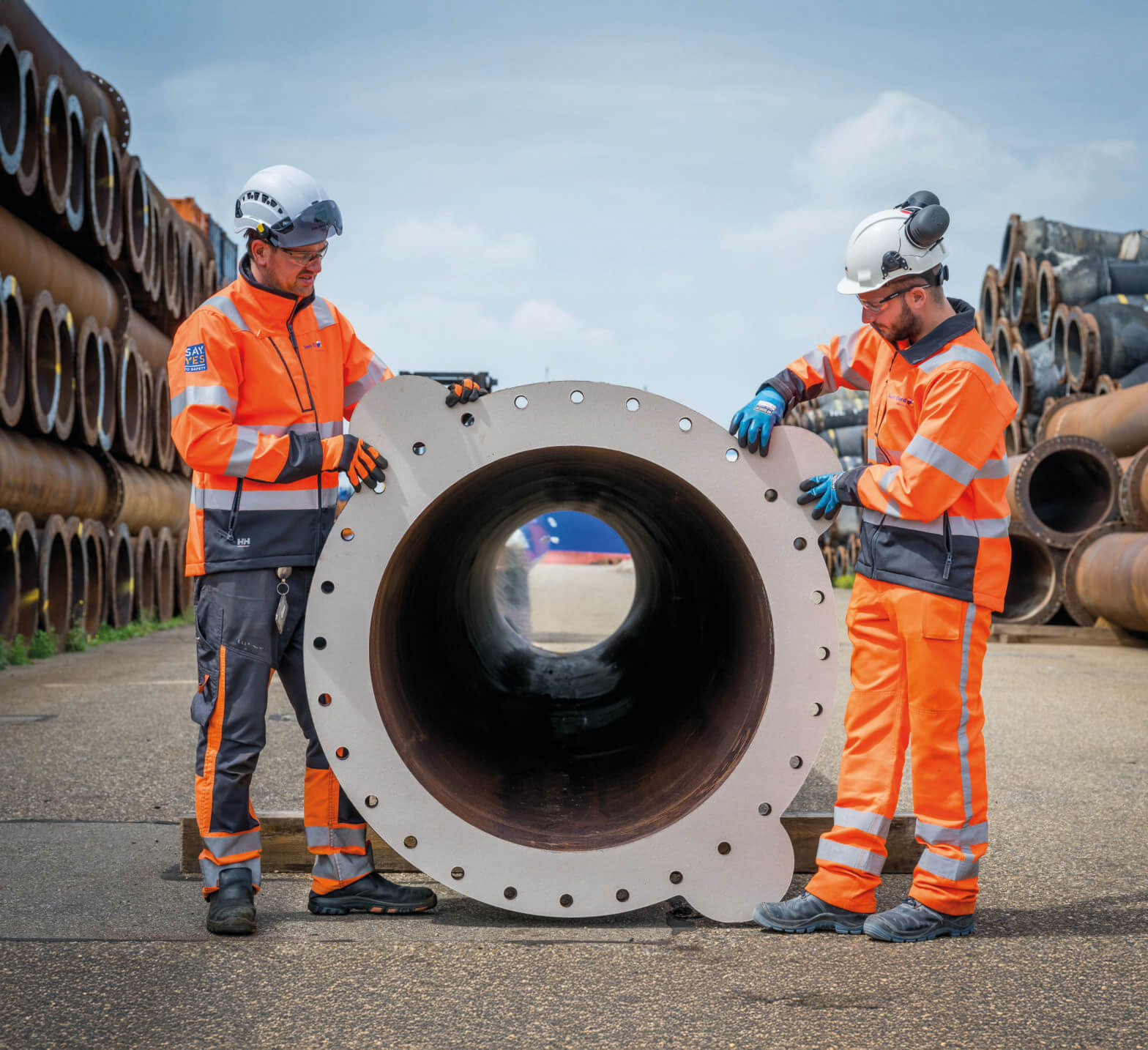
Van Oord’s award-winning reclamation pipe gasket redesign
Sometimes a small improvement can have a huge impact. Van Oord’s new reclamation pipe gasket design significantly reduces the risk of potential finger injuries with an easy to implement and cost-effective solution. The design was chosen as the winner of IADC’s Safety Award 2025.

Submissions for the 2024 IADC safety awards
When individual employees, teams and companies view everyday processes and situations through a continuous lens of safety, they can each contribute to making all aspects of operational processes, whether on water or land, safer. For the 2024 Safety Awards, IADC's Safety Committee received 14 submissions. Each one is assessed on five different categories: sustainability; level of impact on the industry; simplicity in use; effectiveness; and level of innovation.

Award winners share their innovative designs
Cutter head repairs in the dredging industry have long been associated with significant safety risks, such as falls and musculoskeletal injuries due to awkward working postures and the need for lifting. Jan De Nul’s latest cutter head staircase design addresses these challenges by offering a more straightforward and safer solution.

Study of slurry transport characteristics in a jet pump
In this study, the computational fluid dynamics (CFD) analysis method was used to simulate the mixing and transportation characteristics of water and mud in a jet pump. By observing the fluid mixing law in the mixing chamber, throat and other structures, the internal flow field distribution of the jet pump under different working conditions was compared and studied. As a result, the internal flow details and operation performance curves of a certain size jet mud pump were obtained. It provides theoretical support for the optimisation design of a slurry jet pump in dredging engineering.

Finding innovative solutions to improve safety
When individual employees, teams and companies view everyday processes and situations through a continuous lens of safety, they can each contribute to making all aspects of operational processes, whether on water or land, safer. For the 2023 Safety Awards, IADC's Safety Committee received nine submissions. Each one is assessed on five different categories; sustainability; level of impact on the industry; simplicity in use; effectiveness; and level of innovation.

Estimating sediment erosion of a centrifugal dredge pump’s impeller
Sediment erosion is a phenomenon of mechanical wear of components that decreases efficiency and uptime of the dredging process. Dredge pumps are designed to handle mixtures of water and solid particles with varying particle size from less than 0.002 mm to greater than 200 mm. A dredge pump’s overall effectivity in the field depends upon its uptime. Uptime is influenced by the number of times the pumping process is interrupted, which can be due to maintenance combating the material loss, clogging, etc. This research deals with the erosion phenomena by considering a framework of numerical models, capable of qualitative and quantitative erosion estimation, coupled with experiments for validation. Coordinate Measurement Machine (CMM) is used for surface roughness measurement before and after the experiment, thus depicting the material loss due to erosion.

Submissions for IADC’s Safety Awards 2022
When individual employees, teams and companies view everyday processes and situations through a continuous lens of safety, they can each contribute to making all aspects of operational processes, whether on water or land, safer. For the 2022 Safety Awards, IADC’s Safety Committee received 11 submissions. Each one is assessed on five different categories; sustainability; level of impact on the industry; simplicity in use; effectiveness; and level of innovation.

Interview: Marsha Cohen – Editor-in-chief for quarter of a century
As IADC celebrates 50 years of its quarterly journal, it seemed only fitting to speak to its longest standing editor, Marsha Cohen, who stood at the helm of Terra et Aqua for 25 years. We caught up with her at her home in Florida to talk about the highs, the lows and a good dose of serendipity.

